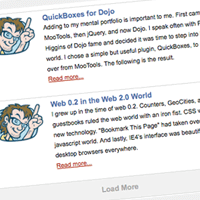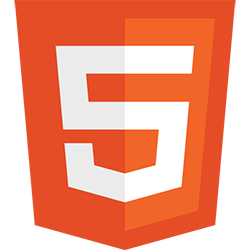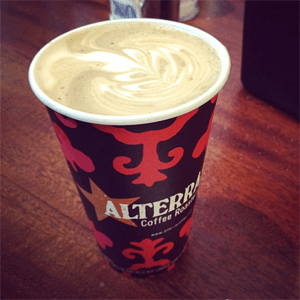David Walsh on NetTuts: Create a Twitter-Like “Load More” Widget

My latest article post for NetTuts has been published. From the intro:
Both Twitter and the Apple App Store use a brilliant technique for loading more information; you click the link and fresh items magically appear on the screen. This tutorial teaches you to use AJAX, CSS, JavaScript, JSON, PHP, and HTML to create that magic. This tutorial will also feature both jQuery and MooTools versions of the script.
It was fun creating the widget using both MooTools and jQuery JavaScript. Be sure to check it out!
![Page Visibility API]()
One event that's always been lacking within the document is a signal for when the user is looking at a given tab, or another tab. When does the user switch off our site to look at something else? When do they come back?
![CSS Filters]()
CSS filter support recently landed within WebKit nightlies. CSS filters provide a method for modifying the rendering of a basic DOM element, image, or video. CSS filters allow for blurring, warping, and modifying the color intensity of elements. Let's have...
![Ana Tudor’s Favorite CodePen Demos]()
Cocoon
I love canvas, I love interactive demos and I don't think I have ever been more impressed by somebody's work than when I discovered what Tiffany Rayside has created on CodePen. So I had to start off with one of her interactive canvas pens, even though...
![Introducing MooTools HeatMap]()
It's often interesting to think about where on a given element, whether it be the page, an image, or a static DIV, your users are clicking. With that curiosity in mind, I've created HeatMap: a MooTools class that allows you to detect, load, save, and...






i’ve been there in nettuts and i saw your tuts. Your such a brilliant man! thanks keep on shinning!
Nice to see you on nettuts !
Great article btw. Can’t wait to try this out :)
p.s: Is it possible that you forgot the normal css3 border-radius property on #posts-container ? Or maybe it was your intention to use specific webkit and mozilla properties ?
Add to #load-more its parent radius (
-webkit-border-radius:10px; -moz-border-radius:10px;) (css border inherit with border-color change will not work properly as it will require more changes & more code).I’m always lazy reading such large articles, especially from nettus, but I suppose you explain it nice…
wow, don’t you ever sleep? where do you get the time for 2 nice tutorials per day? Thanks this was interesting…
Great tutorial… One more like this
” Twitter like more button ”
http://9lessons.blogspot.com/2009/04/twitter-like-more-button-with-jquery.html
Oh this is very great! Nice and clean!
Really enjoyed your article David, your skills continue to impress.
Hi, brilliant tutorial, I’m newbie with php & mysql but this type and quality of article push me to learn more.
Can you please show us how we can implement this in wordpress.
Great article … but would love to see it fully implemented in wordpress.
Now I’ve been trying for quite some time to implement this into my WordPress installation, but I’ve failed.
Then I saw a link to someone who customized it to work with WordPress SQL functions, but that didn’t work either.
So I would love to see a really thorough tutorial and/or description of how to implement this into WordPress. Maybe even how to make it into a easy plugin.
I believe a lot of people are looking for this functionality in WordPress – would be great!